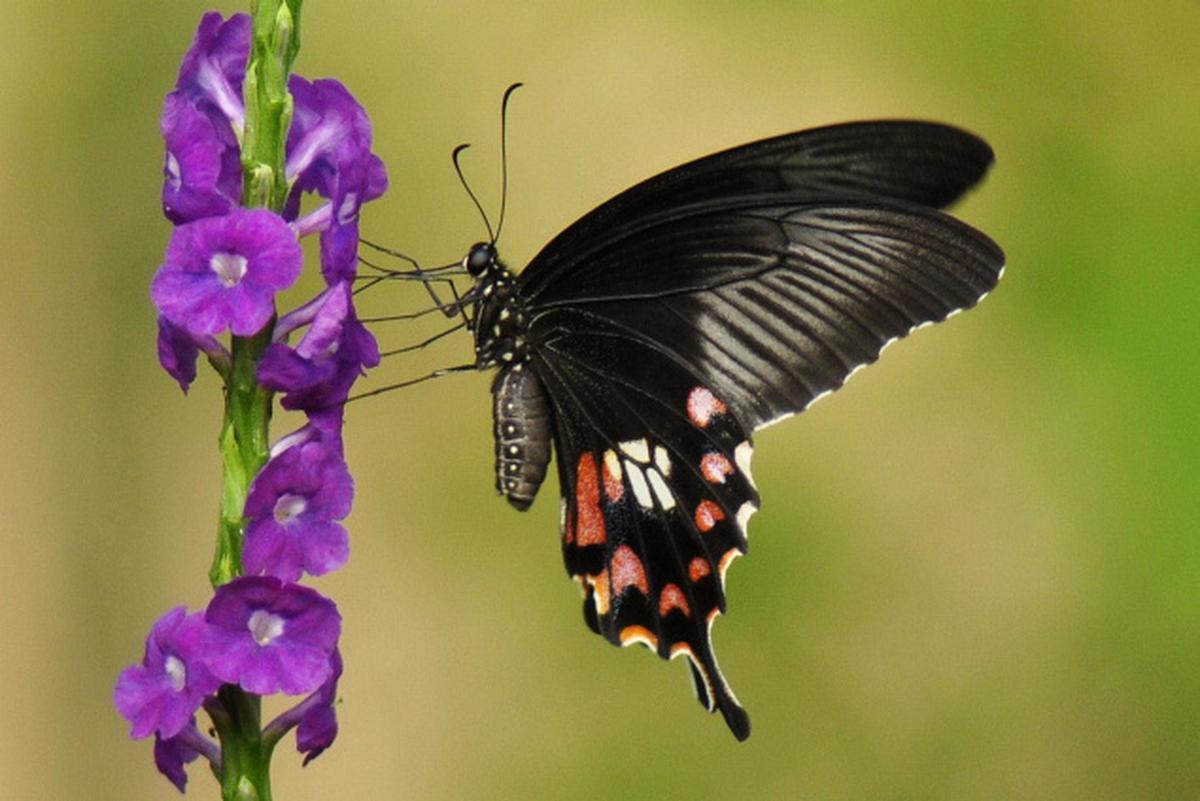Important Facts For Prelims
Butterflies Adaptation and Evolution Processes
- 31 Dec 2022
- 5 min read
Why in News?
A new study has thrown light on many interesting aspects of butterflies’ adaptation and evolution processes.
- The study was conducted on several species of butterflies and their imitative traits in the Western Ghats in Karnataka.
What are the Highlights of the Study?
- The findings were categorised into three:
- Model Species: Those that are toxic to predators.
- Batesian Mimicry Species: Those that evolved traits of unpalatable species (poisonous) to avoid predators.
- Non-mimetic Species: Those that are closely related to Batesian mimics but did not evolve mimicry trait.
- The unpalatable one is called models and the palatable one is called mimics.
- Butterflies that have evolved to make use of mimicry evolve faster than the species that don’t make use of mimicry.
- Batesian mimics adapt to avoiding predators by evolving similar wing colour patterns and flight behaviours.
- Analyses revealed that not only had colour patterns evolved at a much faster rate, but that members of mimetic communities had evolved at a faster rate than their close relatives.
- Butterflies exhibit a wide range of colours and colour patterns, suggesting that the genetic architecture underlying wing patterns and colour pigments are relatively malleable and susceptible to change.
What is the Significance of Western Ghats?
- About:
- Western Ghats consist of a chain of mountains running parallel to India’s Western Coast and passing from the states of Kerala, Maharashtra, Goa, Gujarat, Tamil Nadu and Karnataka.
- Significance:
- The Ghats influence the Indian monsoon weather patterns that mediate the warm tropical climate of the region.
- They act as a barrier to rain-laden monsoon winds that sweep in from the south-west.
- Western Ghats are home to tropical evergreen forests, as well as to 325 globally threatened species.
UPSC Civil Services Examination Previous Year Question (PYQ)
Q. Recently, for the first time in our country, which of the following States has declared a particular butterfly as State Butterfly? (2016)
(a) Arunachal Pradesh
(b) Himachal Pradesh
(c) Karnataka
(d) Maharashtra
Ans: (d)
- Maharashtra became the first State in the country to have a ‘State Butterfly’. It declared the Blue Mormon (Papilio polymnestor) as the State Butterfly.
- It is the second largest butterfly in India after the Troides minos commonly known as the Southern Birdwing.
- It is found only in Sri Lanka, Western Ghats of Maharashtra, South India and coastal belts of the country.
- It has velvet and black wings with bright blue spots. Therefore, option (d) is the correct answer.
Q. In which of the following regions of India are you most likely to come across the ‘Great Indian Hornbill’ in its natural habitat? (2016)
(a) Sand deserts of northwest India
(b) Higher Himalayas of Jammu and Kashmir
(c) Salt marshes of western Gujarat
(d) Western Ghats
Ans: (d)
- Great Indian Hornbills are large and wide-ranging birds and most species are dependent on tropical forest habitats that contain large and tall trees.
- India has nine Hornbill species, of which four are found in the Western Ghats – Indian Grey Hornbill (endemic to India), Malabar Grey Hornbill (endemic to the Western Ghats), Malabar Pied Hornbill (endemic to India and Sri Lanka) and endangered Great Indian Hornbill. India also has one species that has one of the smallest ranges of any Hornbill – the Narcondam Hornbill, found only on the island of Narcondam in Andaman Sea. Therefore, option (d) is the correct answer





